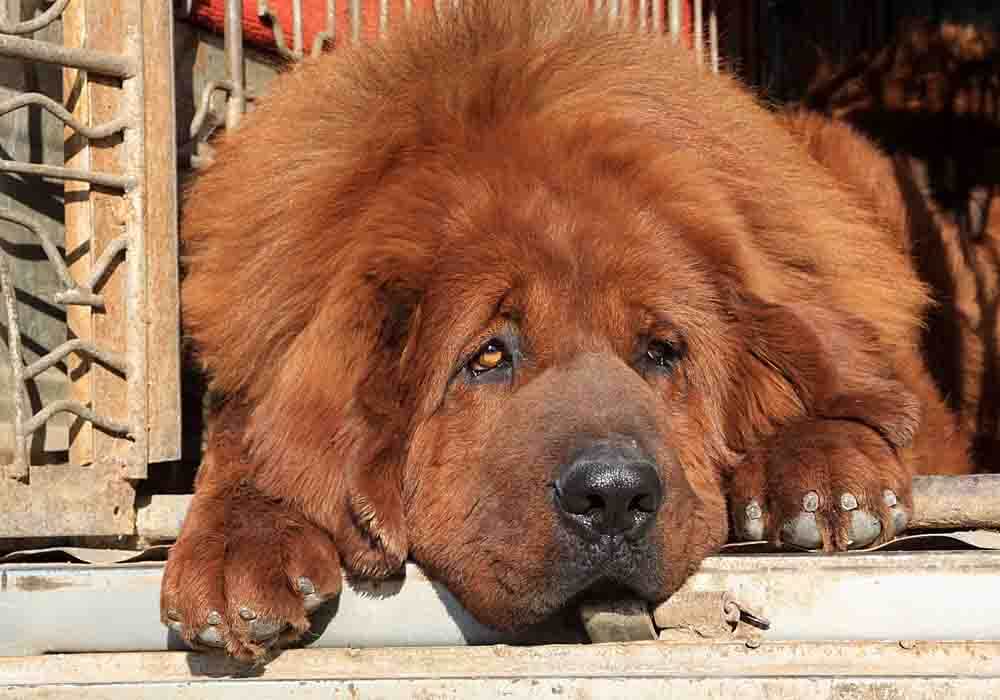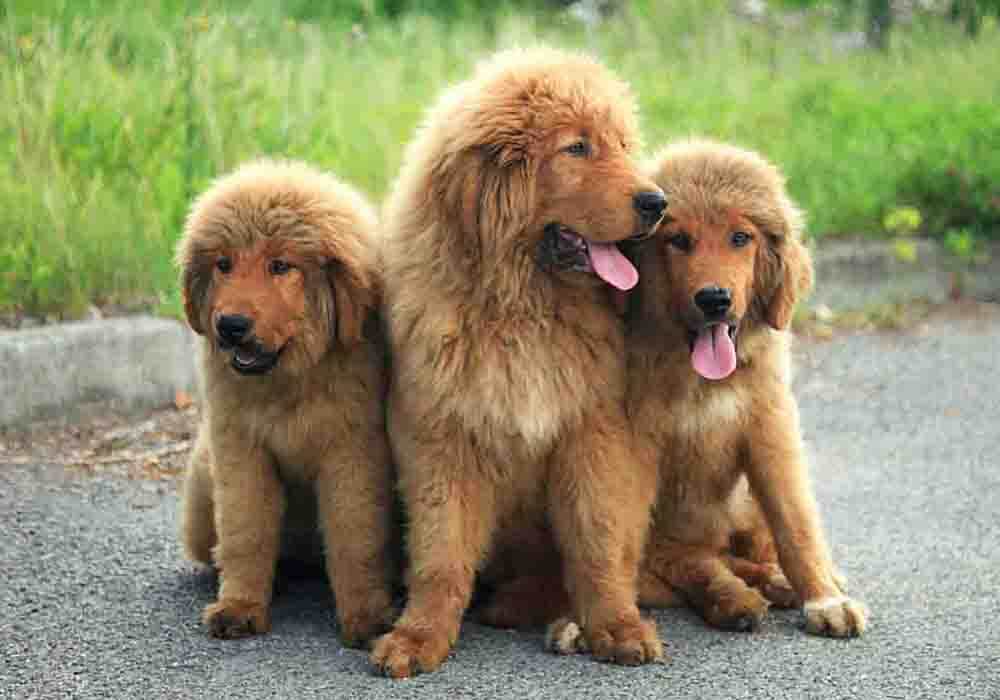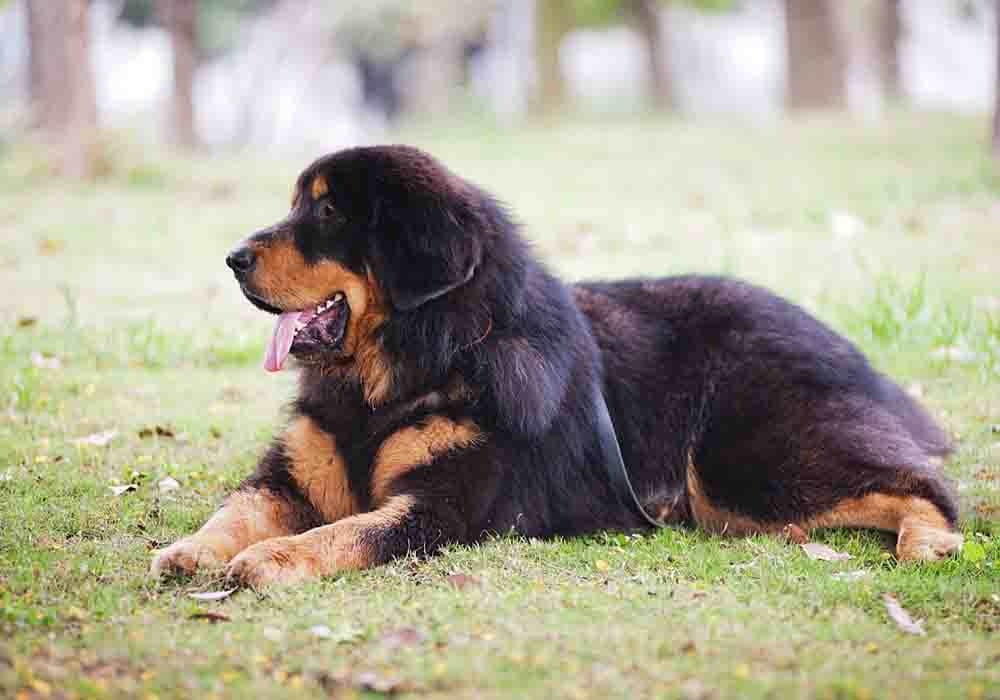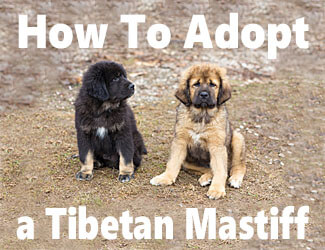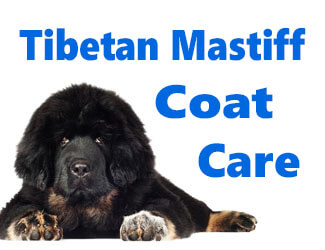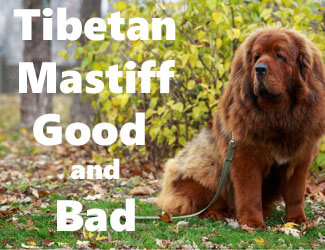Tibetan Mastiff Coat Care
This Helpful Guide Makes It Easy
by Ken Alden
Tibetan mastiffs have various characteristics that are unique to the dog world and are a wonderful breed. The Tibetan Mastiff is a highly intelligent breed that has the ability to adapt to numerous functions; they are indeed a sight to see. Tibetans also have an immense double coat that makes them have a lion-like appearance that needs maintenance.
Tibetan Mastiff Coat Care...
Routine coat care includes bathing, thorough and regular brushing that keeps the coat in the best shape. A Tibetan Mastiff should be groomed frequently to remove loose hairs, keep them warm during winter, and prevent pests and diseases.
The other sections of this article will help answer why it is crucial to groom Tibetan Mastiffs and how best to do it, and the various grooming tools for the Tibetan Mastiff. Read More Below...
Pro-tip: Ever try lifting a Tibetan Mastiff? Their weight can hurt not only your back but their joints when they hop down from cars, sofas or even your bed. To protect your back and theirs check out the best Mastiff ramps on Amazon.com now.
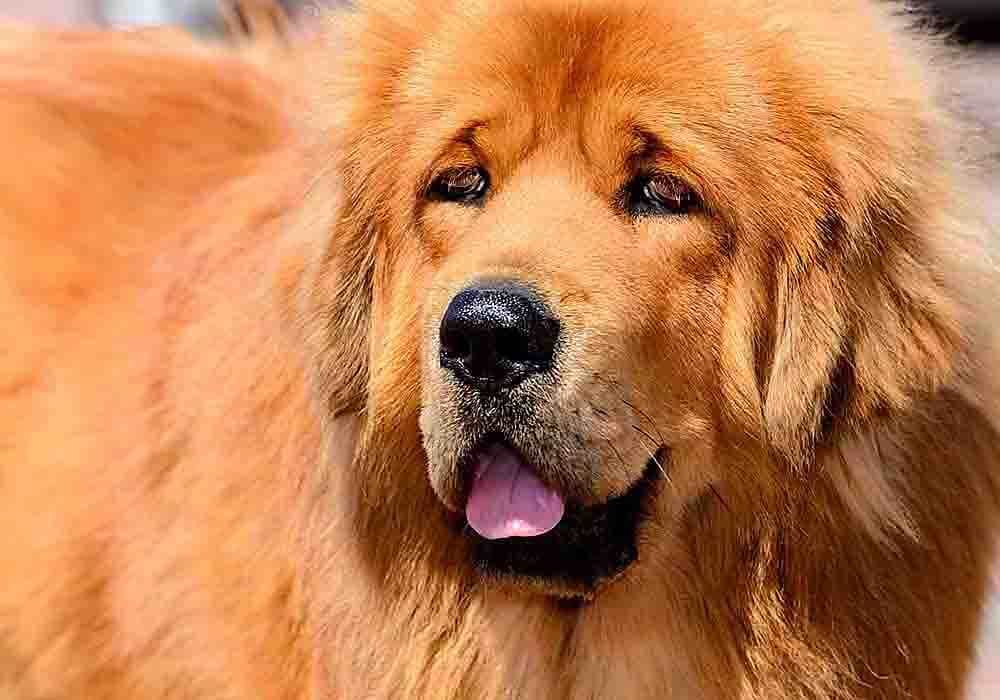
Benefits of Grooming Your Tibetan Mastiff
Tibetan Mastiffs are among the most loving, affectionate, and loyal dog breeds in the world. This breed is large and requires frequent grooming compared to other species. However, Tibetan Mastiff coat care can be an uphill task for many dog owners but it is important in order to maintain a healthy skin and coat of Tibetan Mastiffs.
Grooming Helps Your Dog Keep Warm
Brushing helps in separating fur. On the flip side, a thick clumpy coat prevents warm air circulation close to the skin, making it hard for unkept dogs to keep warm. The problem can worsen if the coat becomes wet, especially in winter. Think of it as a wet, cold blanket thrown over the dog and needs time to dry out.
Accordingly, the coat can be like a hot scorching cover in summer. In each case, your dog's skin will become irritated and unhealthy, making it easier for bacterial, fungal, and yeast infections to crop up.
Grooming Prevents Pests
Treating a Tibetan Mastiff for pests, such as fleas and ticks, is quite challenging, mostly if regular grooming is not done. Pests can hide better beneath matted coats, making it harder for tropical solutions to work on them. This problem can result in skin complications such as flea dermatitis or secondary skin infection if it goes untreated for long.
In most cases, people report they do not know how often a
Tibetan Mastiff should be groomed. Well, there is no definite answer to that
question. Usually, the answer will depend on the environment, climate, and the
dog. This means you need to assess how often your dog gets dirty.
Pro-tip: Tibetan Mastiff anxiety, aggression, destructive chewing, jumping up, fearfulness, and other behaviors can be controlled with the right training program.
Here’s a great course that addresses these issues along with many other dog training basics: Check it out now!
Making Grooming a Routine
To remove loose hair and separate the coat, a Tibetan mastiff should be groomed regularly. A clamped coat does not help the dog in cold or hot weather conditions. Accordingly, you cannot depend on nature to provide natural air conditioning when the dog blows his coat to keep cold in warm weather, even though it may be efficient to some extent.
Preparing to Bathe a Tibetan Mastiff
Bathing is the most crucial part of a Tibetan Mastiff coat care. Additionally, it would be best if you are prepared, have perseverance, and a positive attitude to make bathing fun while helping your dog avoid many diseases and infections.
This procedure helps your dog keep away from diseases and infections, and it can also be a fun time with your furry friend. You can bathe your Tibetan Mastiff every three months to keep the coat fresh, shiny, and without loose hair.
- Before cleaning your dog, give it a good brushing to eliminate mats and dead hair. You can also use bathing products like shed shampoo with moisturizing conditioner, shed treatment or anti-shed shampoo, and styling spray.
- Massage the coat using shampoo or any other bathing product you have, rinse it thoroughly, then towel dry the dog.
- Accordingly, you have to wipe all wrinkled breeds using a dry, soft cloth. Alternatively, you can use high-velocity dryers.
It would help if you had a grooming table or a flat raised surface that is secure and reaches your waist level. You can also borrow a helping hand to hold the leash as you groom your pet. Most Tibetan Mastiffs love grooming when a treat is provided. So, you can bring along some rewards for the dog.
Also, remember to brush your dog thoroughly before bathing. Brushing prepares the coat to make it easier for shampoo, conditioner, and water to reach the skin.
Coat Brushing
A Tibetan mastiff is likely to shed the dense undercoat during hot conditions. If this happens, the coat should be taken care of by brushing to prevent it from looking rugged. The Tibetan Mastiff long coat must be brushed at least every two days to avoid matting. This is specifically important for regions around the mane, legs, tail.
How to Brush a Tibetan Mastiff Coat
Start brushing at the bottommost side, giving a few rubs, grasping the fur above the region you are grooming, and allowing it to fall as you move on. Move up slowly until the dog is entirely brushed.
This method is more straightforward than diving in. Additionally, it helps you do more through brushing. Remember to brush from the head towards the tail, check knots, and remove them using a dematting tool.
A slicker brush can be used in any direction unless you are brushing the tail or back of the leg. A tail should be brushed from the underside, moving from portion to portion downwards. For the britches, start at the bottom, grasping the coat beyond the leg and brushing as you go up. Combine the same sections as you brush to remove tangles.
Brushing Tangles and Knots
In case you come across knots and tangles, you will need various grooming tools to remove them. You should be extra cautious when using some of these tools since they may injure your dog if not used in the right manner.
Most Tibetan Mastiffs have knots and tangles behind the ears, tail, and britches only if they are groomed frequently. This means you will have a hard time looking for knots and tangles over the body.
Pro tip: Do not use scissors to remove knots since it is likely to mistake skin for hair and injure the dog. Instead, start at the edge of the knot going inwards in trouble spots. Take caution not to grab the entire knot using a dematting tool. It is much easier and safer to brush out the tangles bit by bit.
Coat Trimming
Every year, Tibetan Mastiffs blow their undercoat in an immense shedding in late summer or spring. During this time, it is recommended that you use an undercoat rake or a de-shedding tool. No trimming or any form of clipping is acceptable, with the exception of shaping the feet and giving a tidy look to the hock of a Tibetan Mastiff.
Pro-tip: Tibetan Mastiff's (and their owners) love dog crates…and for good reasons. Crates keep dogs from mischief while you're away, are perfect for house training, for traveling by car, and provide the dog a place to de-stress. Check out the best Mastiff crates on Amazon.com now.
Tibetan Mastiff Grooming Tools
There are many brand names of different grooming tools you can use on your Tibetan Mastiff. You can also find alternative and comparable tools that work just as well. A must-have grooming tool for Tibetan Mastiff coat care is a slicker brush. This is a tool that will come in handy in the initial brushing of your Tibetan Mastiff. The slicker brush helps loosen dead hair to remove loose dirt.
Another great tool when it comes to coat care is an undercoat rake. Compared to tools of old these things work well...and fast once you get the hang of them.
Of course you’ll need a decent pair of hair clippers for thick coats which are a
must have when you have a dog with this much hair!

This is a LARGE dog that has BIG grooming needs, because of this we offer additional grooming tips beyond just coat care in this article of ours about grooming your Tibetan Mastiff.
Tibetan Mastiff Coat Care...Final Thoughts
Tibetan mastiff has a double coat with an extended, dense, coarse-textured topcoat and a heavy, soft, wooly undercoat, which is thinner during warmer months. They shed depending on the climate it resides. Therefore, always check to see if there are tangles or mats in the mane, breeches, and tail, where the coat tends to be denser.
Coat care sets the basis for getting healthy skin and coat and this article has given a clear guide into grooming a Tibetan Mastiff with steps and recommendations for grooming tools you can use to get the job done.
Return to the top of this Tibetan Mastiff Coat Care page

About the Author...
Ken Alden, a dedicated Mastiff owner for over eight years, is acclaimed for his expertise in care, grooming, and training. Read more About Me and my dog Shadow.
- Mastiff Guide Home ›
- Tibetan Mastiffss ›
- Tibetan Mastiff Coat Care
